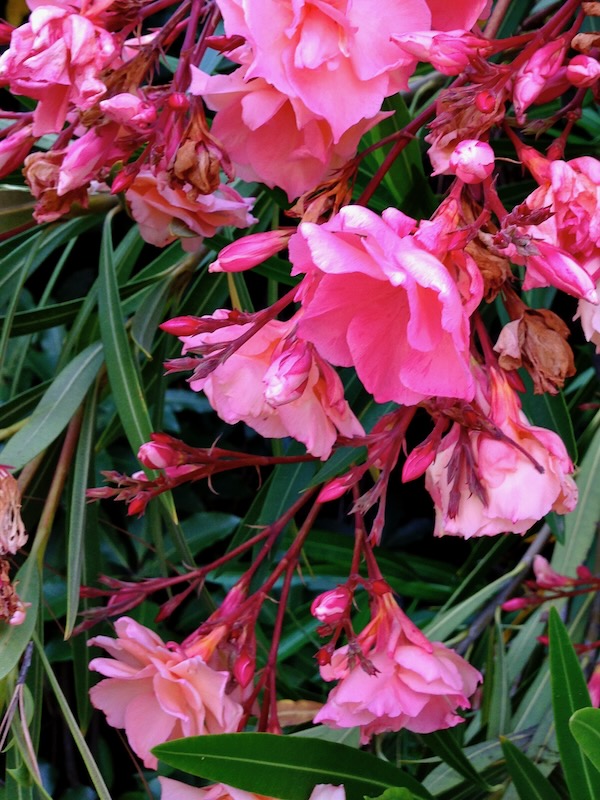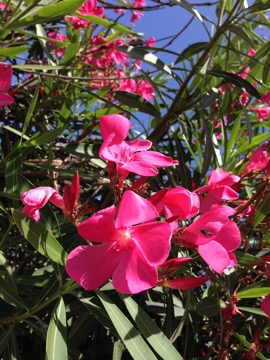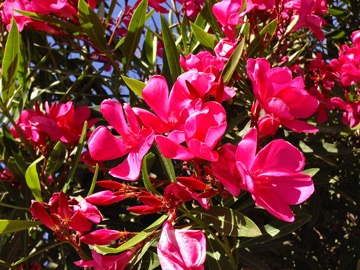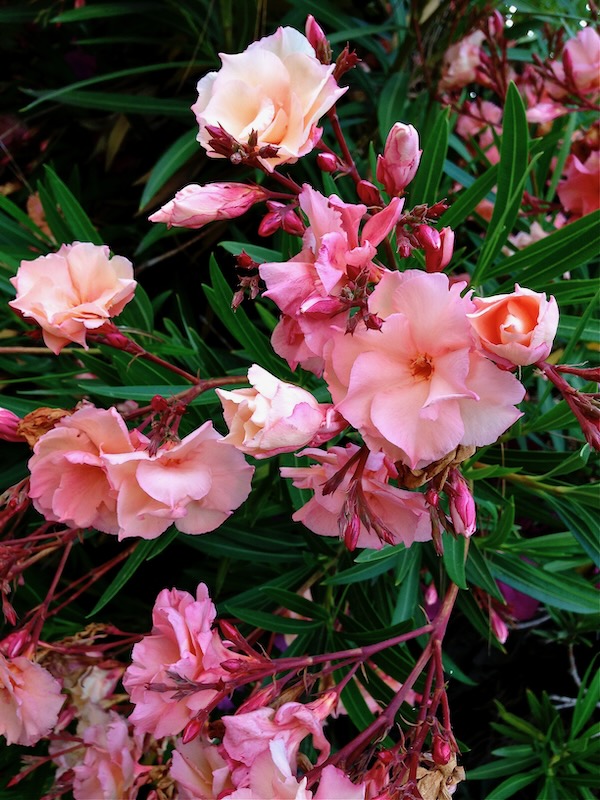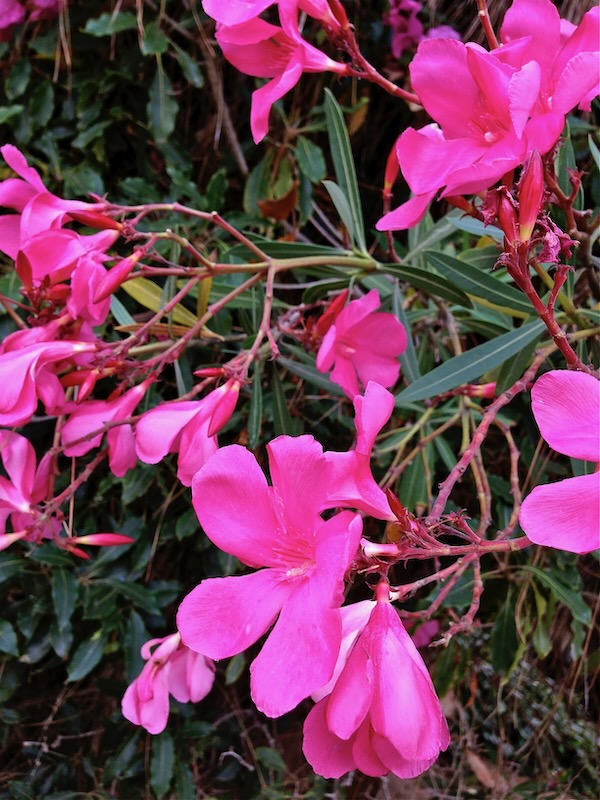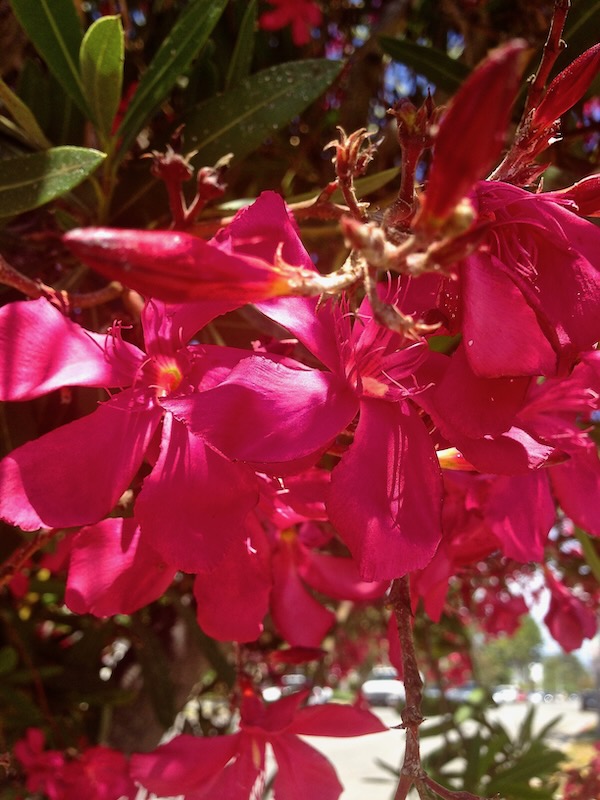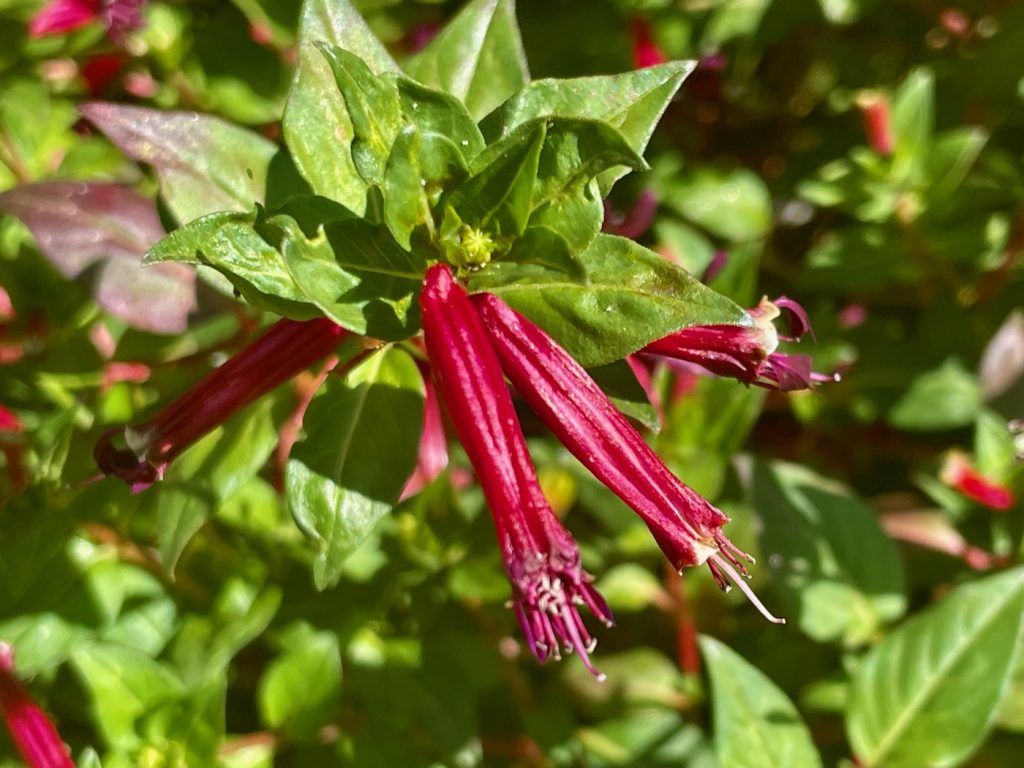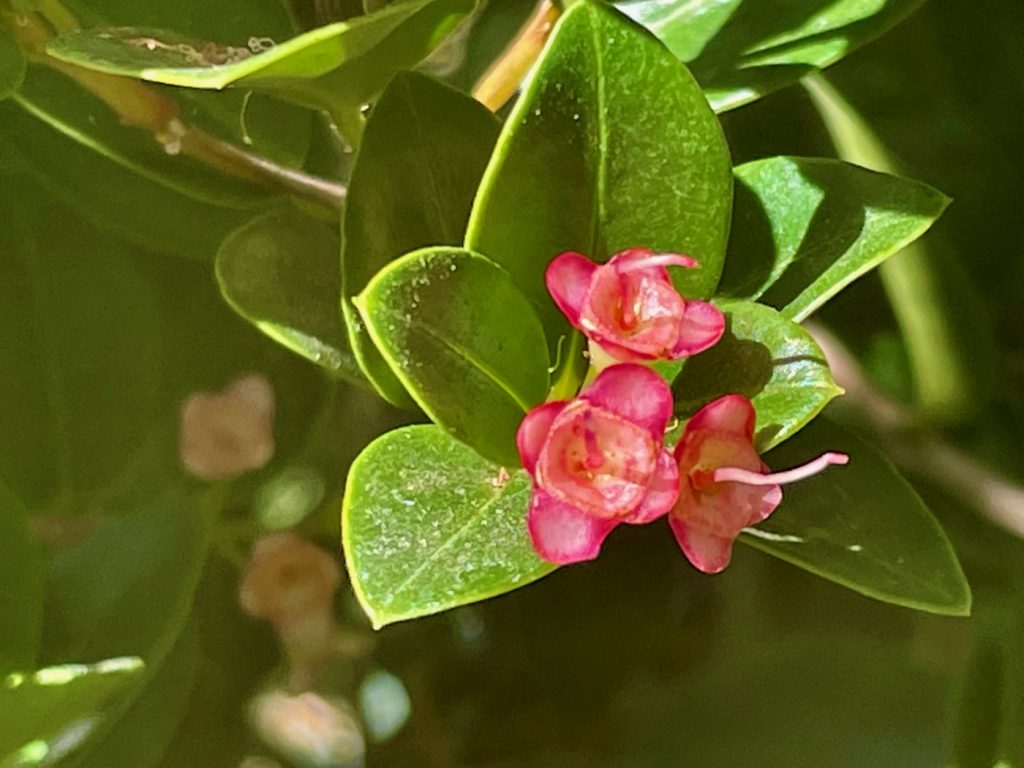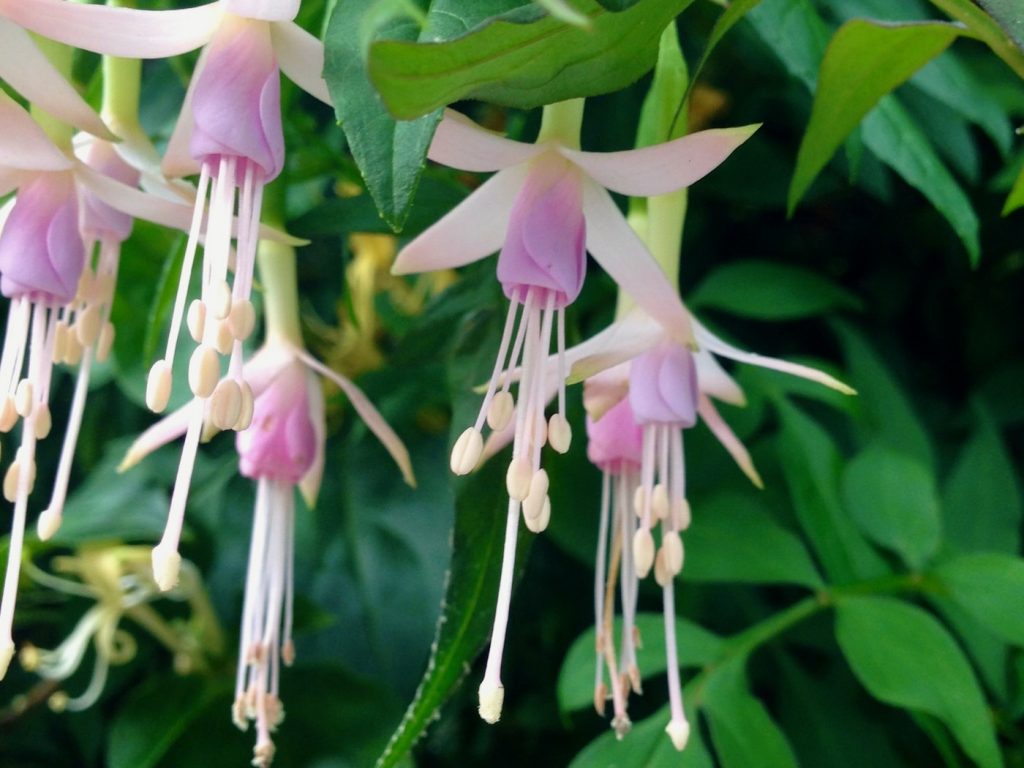Nerium Oleander: A Stunning Evergreen Shrub of Bold Beauty
Nerium Oleander, a captivating evergreen shrub, graces landscapes with its enchanting presence. While its origin remains shrouded in mystery, this remarkable plant is closely associated with hot climates and deserts, particularly in the Mediterranean region. With its fast growth, vibrant flowers, and striking appearance, Nerium Oleander creates a tapestry of colors that enhances any outdoor space.
Nerium Oleander: Names and Family
Commonly referred to as Nerium or Oleander, this plant belongs to the Apocynaceae family. With its narrow dark leaves and clustered fragrant flowers, Nerium Oleander stands tall, reaching heights of up to 6 meters or 20 feet. The flowering season peaks during the summer, treating admirers to an array of five-lobed blossoms in shades of white, pink, or yellow. These delightful blooms grow in clusters, transforming the landscape into a picturesque masterpiece. From April to October, the Nerium Oleander showcases its resplendent beauty, infusing the surroundings with a touch of elegance.
Nerium Oleander: Versatile and Resilient
Nerium Oleander possesses a remarkable ability to adapt and thrive. Its resilience allows it to withstand unfavorable conditions such as drought, poor drainage, and even salty soils. Thriving in heat, this shrub proves itself to be a resilient survivor capable of enduring harsh environments. While its natural growth pattern is that of a shrub, it can be expertly trained to resemble a majestic tree, adding another layer of versatility to its allure.
A Mediterranean Icon: Nerium Oleander in Rome
Those who have visited Rome, Italy, will likely have encountered the magnificent Nerium Oleander. Gracing the city’s street-scapes and acting as a stunning backdrop to ancient landmarks, this shrub has become an iconic feature of Rome’s landscapes. Journeying from Rome to Ostia, the beachfront city just a short distance from Leonardo Da Vinci Airport, one can embark on a road called Cristoforo Colombo Highway. During the summer months, this route is transformed into a breathtaking spectacle as Nerium Oleander adorns its sides, creating a captivating visual experience for travelers.
Cultivating Nerium Oleander:
Sunlight: Nerium Oleander thrives in full sun exposure, making it vital to choose a planting location that receives at least six hours of direct sunlight each day. Adequate sunlight promotes vigorous growth and an abundance of vibrant flowers.
Soil Preference: Plant Nerium Oleander in well-drained soil to prevent waterlogging, which can lead to root rot. The ideal soil type is loamy, allowing for proper drainage while retaining some moisture. Prior to planting, enrich the soil by incorporating organic matter, such as compost, to improve its fertility and structure.
Watering Routine: While Nerium Oleander is drought-tolerant once established, regular watering is necessary to encourage healthy growth and maximize flower production. Water the plant deeply, ensuring the soil is moist but not waterlogged. During hot and dry periods, increase the frequency of watering to prevent the soil from drying out completely. Always allow the soil to dry slightly between watering sessions to prevent overwatering, as excessive moisture can lead to root issues.
Propagation Methods: Creating New Beginnings
There are several methods for propagating Nerium Oleander, including:
- Seeds: Collect ripe seeds from the plant, sow them in a well-draining seed-starting mix, and keep them in a warm and moist environment until germination occurs. Transplant the seedlings into individual pots once they have developed several sets of leaves.
- Cuttings: Take semi-hardwood cuttings in early summer. Select a healthy stem and make a clean cut just below a leaf node. Remove the lower leaves and dip the cut end in the rooting hormone. Plant the cutting in a well-draining potting mix and keep it in a warm and humid environment. Rooting should occur within a few weeks.
- Division: When the plant is dormant in early spring, carefully dig up the entire root ball and separate it into smaller sections using a sharp, clean tool. Each section should have healthy roots and shoots. Replant the divisions in suitable locations, ensuring proper spacing.
Pests and Disease: Vigilance and Prevention
Nerium Oleander is generally resistant to most pests and diseases. However, it is still susceptible to certain issues, including:
- Aphids: These small insects can be controlled by spraying the affected plant with a strong stream of water or by using insecticidal soap.
- Scale Insects: These pests can be treated with horticultural oil or insecticidal soap. Ensure thorough coverage of the affected areas.
- Leaf Spot: Fungal leaf spot diseases can occur in humid conditions. To prevent leaf spot, ensure proper air circulation around the plant, avoid overhead watering, and remove any infected leaves promptly.
Regularly inspect the plant for signs of pests or diseases, and promptly address any issues that arise.
Additional Care Tips and Interesting Facts: To encourage a bushier growth habit, prune Nerium Oleander in late winter or early spring before new growth begins. Remove any dead or damaged branches and shape the plant as desired. Remember that all parts of the plant are toxic if ingested, so exercise caution and keep it out of reach of children and pets. In regions with cold winters, protect Nerium Oleander from frost by covering it with a breathable fabric or relocating potted plants to a sheltered area.
Caution: The Dark Side of Beauty
While Nerium Oleander’s allure is undeniable, it is crucial to exercise caution. All parts of the plant are poisonous and should never be consumed. It is also advised against using Nerium Oleander for burning, particularly for barbecues. Even the smoke produced from burning its stems can cause irritation and discomfort.
Boundaries of Color: Nerium Oleander as Hedges
Nerium Oleander finds itself in frequent use as hedges and perimeter plants, effectively demarcating boundaries for both residential and larger properties. These vibrant shrubs create eye-catching fences, adding a touch of elegance and color to the surroundings. However, due to their poisonous nature, one must exercise care and ensure they are kept out of reach of children and pets.
Embrace the Bold Beauty of Nerium Oleander
Nerium Oleander stands as a testament to nature’s capacity for creating breathtaking masterpieces. With its vibrant flowers, resilience, and versatility, this evergreen shrub captivates all who behold it. From its mysterious origins to its presence in iconic locations such as Rome, Nerium Oleander leaves an indelible impression. By adhering to proper cultivation practices and exercising caution, one can experience the majesty of Nerium Oleander while embracing its bold beauty in their own garden or landscape.

